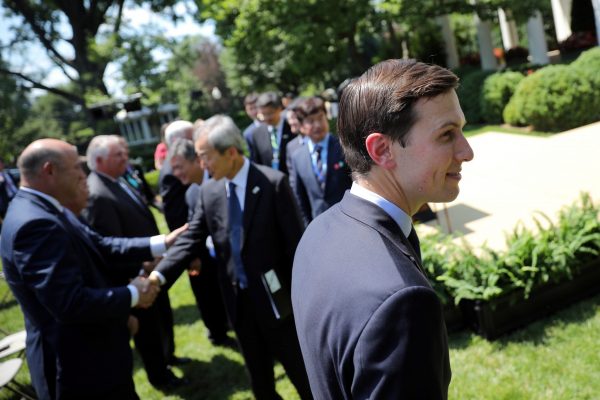The incompatibility of Moon and Trump was recognised from an early stage. Commentators noted during the South Korean election that in ideological convictions, policy objectives and personalities, Moon and Trump appeared to be irrevocably incompatible.
Moon’s election position was to ultimately engage North Korea through increased interaction by civic organisations, re-opening tours to the South Korean-constructed and managed Mount Geumgang resort, re-opening the Kaesong Industrial Complex and even potentially holding an inter-Korean summit. Of particular concern to the US was Moon’s inconsistent position on the deployment of the US Terminal High Altitude Area Defence system — Moon positioned himself between his core supporters and the swinging voters concerned about China’s retaliatory economic pressure.
Trump’s position on North Korea could not be more different. Officially, it appears Trump has little interest in Korean peninsula affairs. He lacks a strong East Asia advisory team and is yet to appoint an ambassador to Seoul (although rumours suggest it will be Victor Cha) or an Assistant Secretary for East Asian and Pacific Affairs to the State Department. There have been no formal processes to elaborate a clear strategy. But from his first Tweet to his last, Trump has consistently called for isolating, sanctioning and pressuring North Korea.
The media sensed the potential for a clash of wills. Harold Nicolson, the renowned British diplomat and scholar, long ago warned against the risks of politicians playing diplomatic roles. Diplomats, he argued, are not prone to emotional outbursts, zealotry or partisan short-term goals. By contrast, politicians are prone to ‘impulsive settlement’, ‘imprecision’ and the pursuit of ‘short-term victories’. Moon and Trump seemed destined to clash.
But seven hours after the two leaders completed their talks, the two sides released a Joint Statement. The significance of the statement lies not just in the fact that one was released, but also in the timing. In meetings with Japan and India joint statements were issued immediately, and with Vietnam and Saudi Arabia after several days. The seven hour delay was reportedly caused by either poor administration or (more likely) wrangling over wording.
Regardless of the delay, the media in both the United States and South Korea applauded the meeting. There was something to placate all sides. The South Korean media emphasised Trump’s acquiescence to Moon’s desire for a dialogue-first approach to North Korea and his openness to direct dialogue under the ‘right conditions’. The US media emphasised the renegotiation of the Korea–US Free Trade Agreement (KORUS FTA) and the renegotiation of burden sharing for the support of United States Forces in Korea. Through skilful diplomacy, the diplomats of South Korea and the United States established a difficult modus vivendi between two presidents with two very different positions.
But the diplomats of South Korea’s Ministry of Foreign Affairs and the State Department cannot rest on their laurels. On the issue of North Korea, Moon and Trump are on inherently divergent paths. As Moon settles in and consolidates his administration, these divergent paths will become clearer. In particular, if Moon is able to secure a stronger position after the April 2020 National Assembly elections, he will have the legislative capacity to push through a more progressive agenda.
For Trump, North Korea has been a welcome distraction, and South Korea represents an ideal target to make good on election promises to renegotiate trade deals and push allies to pay more for US support. But the sustainability of his approach is rapidly disintegrating, and the Korean Peninsula will soon require substantially more attention — not in sporadic Tweets but in the form of considered and responsible strategic policy.
The diplomatic modus vivendi is a cautious first step. On 4 July, North Korea tested an intercontinental ballistic missile — reported as a game-changing test that transforms the strategic calculus. President Trump pledged to react ‘very strongly’. On 6 July, South Korea’s President Moon delivered a key policy speech in Berlin, expressing his aim to engage North Korea, and a willingness to meet Kim Jong-Un ‘at any time, at any place’. There will be no slowdown for the diplomats smoothing over the Moon–Trump relationship.
Jeffrey Robertson is Visiting Fellow at the Asia-Pacific College of Diplomacy, The Australian National University and Assistant Professor at Yonsei University.

